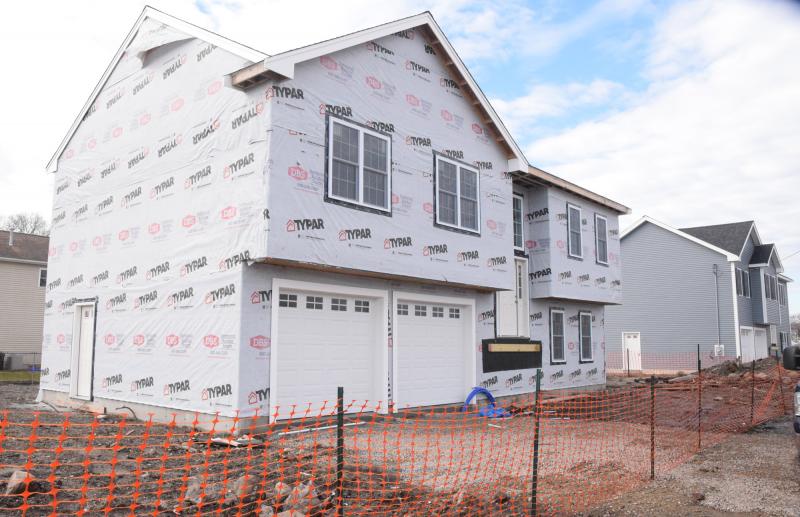EPA recommends action after toxic chemicals found at five Bliss Corner homes
The U.S. Environmental Protection Agency is urging cleanup of Dartmouth’s Bliss Corner neighborhood after identifying dangerously high levels of contaminants in soil surrounding five homes.
The chemicals in the neighborhood’s soil have been the subject of investigation by local, state and federal agencies since 2018. Since then, 74 properties have been looked at for possible contamination.
In a memo dated Sept. 14, the EPA noted that lead concentration around all five homes exceeded the agency’s “removal management level” of 400 parts per million — the level of which cleanup is recommended.
The highest observed result for lead was 2,689 parts per million.
According to the agency, soil around 20 Bliss Corner properties were well above the federal lead level.
One home also exceeded the federal level for polychlorinated biphenyls — also known as PCBs — with more than 23 parts per million.
PCBs are a group of chemicals known to cause cancer that were banned by the EPA in 1979, while lead is a neurotoxin that can be fatal with high exposure.
Due to the high contamination detected, the EPA on Sept. 15 authorized “removal action” — a type of cleanup used to mitigate the threats to human health and the environment — in the South Dartmouth neighborhood.
All five properties are currently occupied.
If no action is taken, the EPA said the soil “will continue to pose a threat to human health and the environment.”
“Potential exposure to harmful levels of lead and PCBs hazardous substances in soil can occur through various common outdoor activities such as gardening, landscaping or small children playing in the soil,” the memo read. “The potential exposure will persist until addressed by the actions recommended.”
Under the plan, the EPA will remove soils to a depth of 3 feet below ground surface or until the state’s standard for lead (200 parts per million) or total PCB (1 parts per million) is achieved.
Contaminated soil will be kept contained until transportation and disposal is coordinated and completed. The agency will then restore the properties to their original conditions.
The EPA’s authorization comes at the request of the state’s Department of Environmental Protection.
An EPA spokesperson said the agency will work closely with affected property owners, the neighborhood, municipal leaders and other parties to “ensure that EPA’s work is fully communicated to residents” during the upcoming months.
MassDEP began an investigation into soil contamination in the neighborhood in July 2018 after toxic chemicals were found at construction sites on Kraseman and McCabe streets.
The Town of Dartmouth’s Board of Health has also been actively involved with the project since 2018.
In November 2019, the levels of PCBs and lead in the soil at two properties — a residence on 19 Kraseman Street and the Little People’s College child care facility at 52 Donald Street — were found at “imminent hazard” levels, which according to state regulations pose “a significant risk of harm” even if only present for a short time.
Following several rounds of groundwater and soil testing, the EPA began assisting MassDEP in 2020, by sending additional teams to sample soil from residential properties.
This past April, MassDEP issued “Notice of Responsibility” letters to Dartmouth and New Bedford municipal governments stating that both the town and the city will likely be on the hook for cleaning up the area.
“Information provided by the Town of Dartmouth in 2019 and 2020 in response to MassDEP's Requests for lnformation indicates that in and around the 1950s particular property owners requested to have their lots filled, and that they engaged with the Town Board of Health to source that fill,” the letter read.
The town could be on the hook for up to three times the cost of testing and cleanup, as well as a 12% interest on any costs already incurred by MassDEP — and it may also be liable for damages to natural resources caused by the chemicals, according to the notice.
The potential price tag on this sort of remediation efforts remains unclear, as an EPA spokesperson said “it is premature to speculate about potential costs at this time.”
And although the city of New Bedford is also held to be responsible — MassDEP wrote that the city “filled vacant and residential lots [in Bliss Corner] with waste and ash between the 1930s and the 1960s” — Dartmouth is potentially liable for these costs “regardless of the existence of any other liable parties.”
A MassDEP spokesperson noted the department had a meeting with officials from both Dartmouth and New Bedford in August, but conversations remain ongoing.
Town officials are currently meeting to determine their official response to the EPA’s notification, Dartmouth Town Administrator Shawn MacInnes said.
He added that the town will continue to work with EPA and MassDEP in public outreach and communication of ongoing activities in the Bliss Corner.
“The Select Board is committed to making sure that the area is safe,” MacInnes said. “This project has been a top priority.”
The town has until Sept. 30 to respond to the EPA.
For more information on the investigation, visit mass.gov/service-details/bliss-corner-neighborhood-dartmouth-ma.
A copy of the EPA memo is attached to this story.














